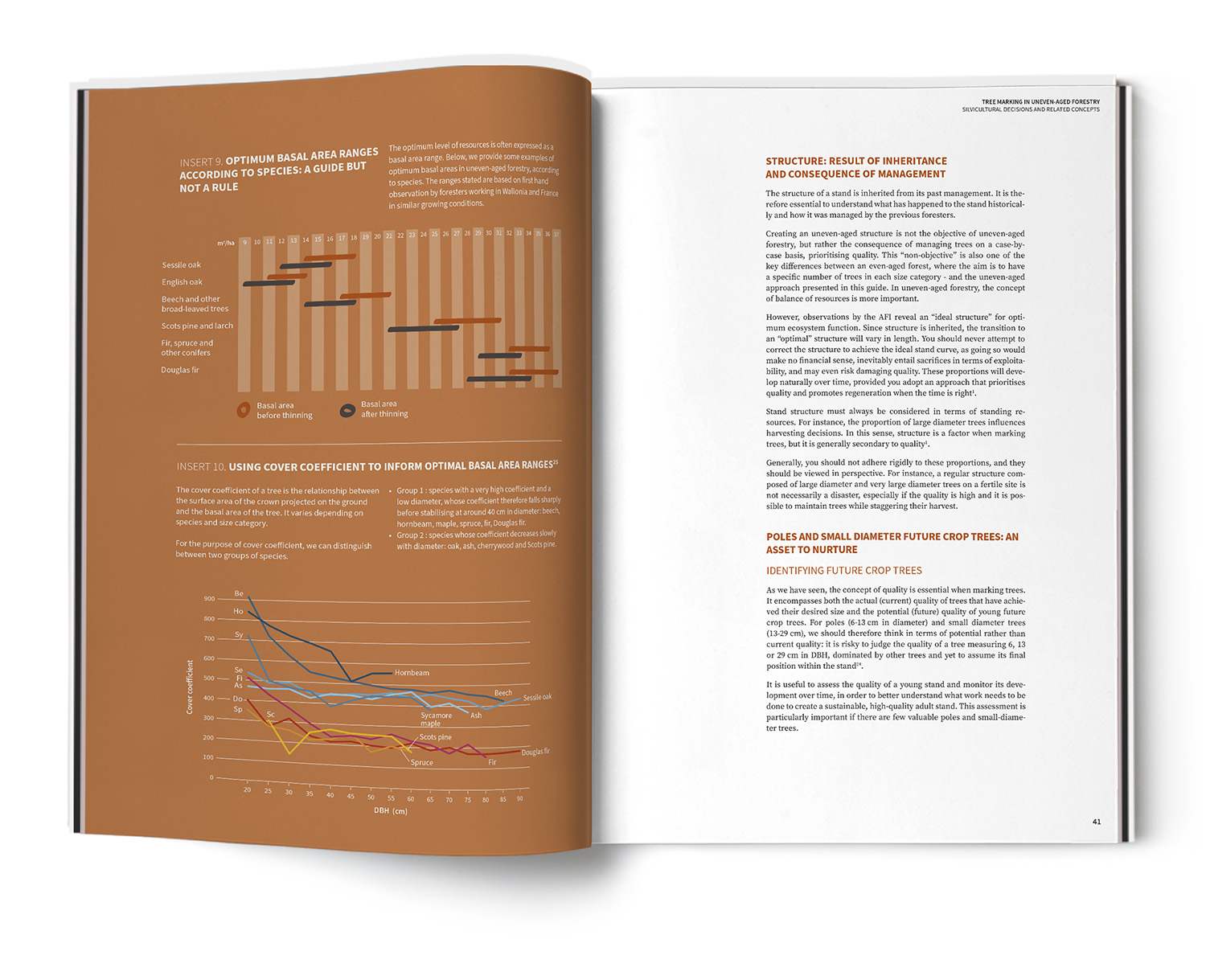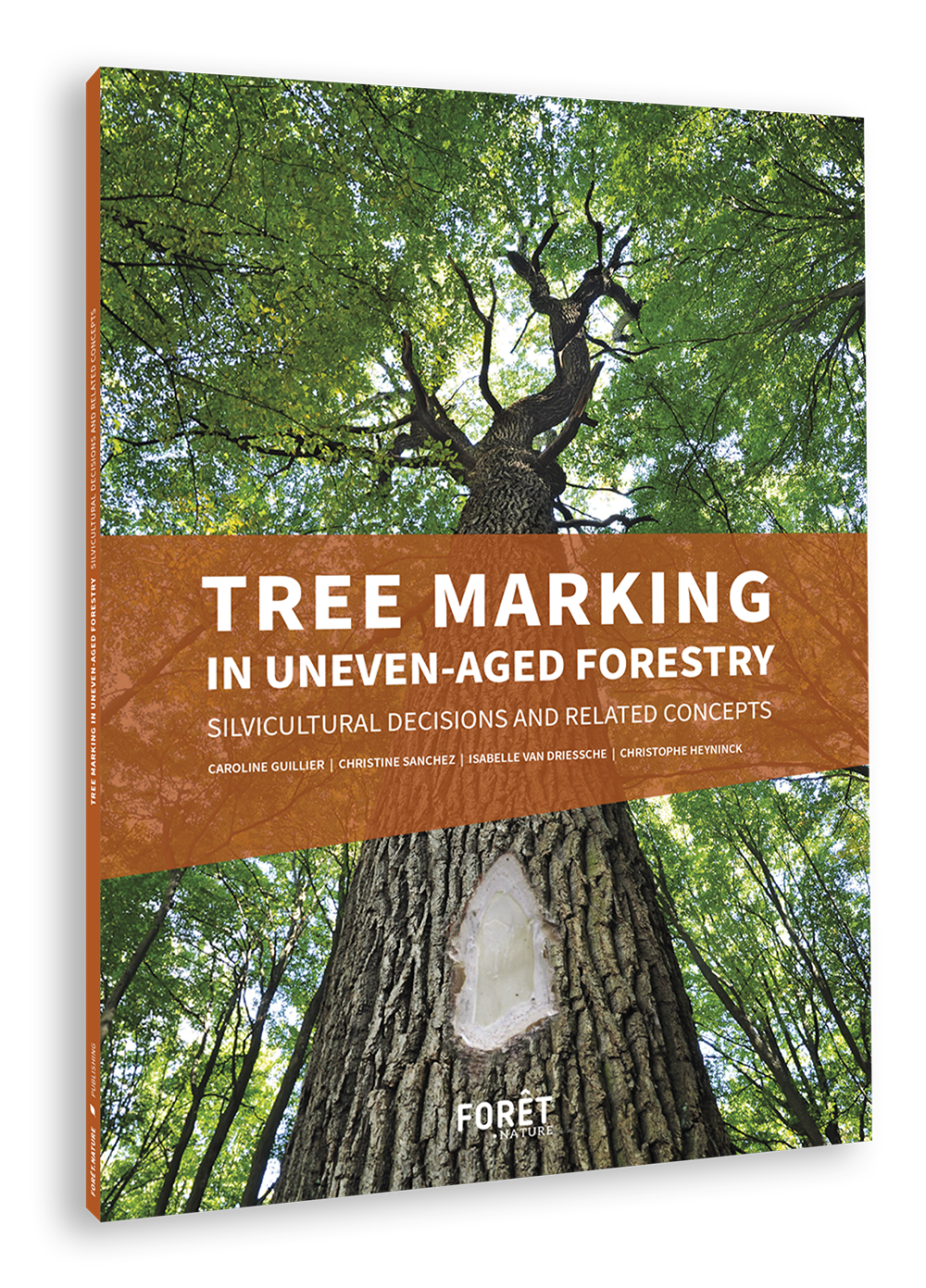Tree marking in uneven-aged forestry
Silvicultural decisions and related concepts
Caroline Guillier, Christine Sanchez, Isabelle Van Driessche, Christophe Heyninck (Forêt.Nature)
Tree marking is the most important forestry management operation. In uneven-aged forestry, perhaps more so than in any other management approach, tree marking is key as it embodies all the objectives of this system, namely achieving and maintaining a state of balance within the stand, enabling production while ensuring constant regeneration.
In an uneven-aged forest, the task of tree marking requires a flexible mindset and approach able to adapt to diverse starting conditions. It is also a perfect opportunity to share knowledge and experience. In practice, it is not simply a case of applying rules or guidelines. Clearcutting is not out of the question, but should be used as a last resort, if no other option is available.
This tree marking guide is extremely straightforward and logical, foregrounding thoughtful observation, experience, the reversibility of choices, constant improvement of quality and pragmatism. However, the process is delicate and demanding, as each felling decision must be reasoned and justified. Tree marking must therefore be completed with care, after careful observation and understanding of the natural dynamics at play.
This document breaks down the marking process into a series of observation stages and details the technical factors required in order to understand the natural dynamics of the stand. For each technical factor, the practical considerations affecting tree marking choices are highlighted for easy reading.
Publisher's note
Forêt.Nature offers forestry managers skills and knowledge on a specific subject. These combine theory and practice thanks to input from our experienced authors and extensive sharing of techniques with professionals in Europe. Use these tips and tools to achieve your forestry vision.
Summary
- Tree marking in uneven-aged forestry: the right approach to adopt
- Observation for tree marking
- The roles of trees, the forest environment and species mix
- Quality: the No. 1 aim of uneven-aged forestry
- Crown forms and function
- From inheritance to peak performance
- Role and management of the understorey
- Constant renewal without sacrificing production
- Transitional measures for specific starting conditions
- Annexes and bibliography
ISBN 978-2-931178-26-3, Ed. Forêt.Nature, 80 p., 29 €
* Discounts on grouped orders:
• 100 copies or more = -15 %
• 250 copies or more = -20 %
• 500 copies or more = -30 %
• 1000 copies or more = -50 %
• Free shipping. One delivery address per order.
• Group orders at info@foretnature.be




